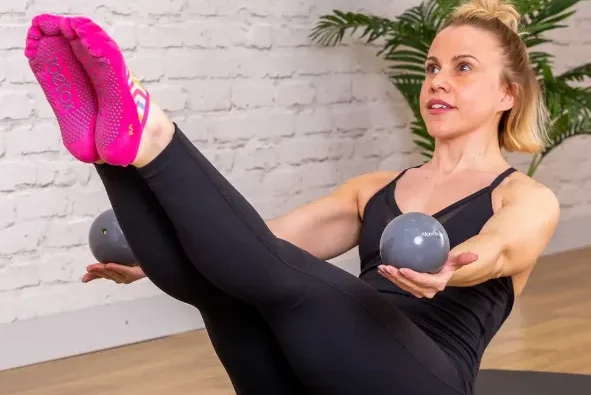
As we age, balance becomes an increasingly important aspect of our overall health and well-being. Yet, it’s often something we take for granted—especially when we’re young. Many people don’t realize how essential balance is until they start to notice a decline in their stability, which can make them more vulnerable to falls and injuries.
Much like strength and flexibility, balance is a skill that needs to be maintained. It’s a prime example of the “use it or lose it” concept. But don’t worry, even if your balance has started to slip, the good news is that it can be improved through consistent practice. There are a few simple exercises that can help you build up your stability, and the best part is that they require minimal equipment, can be done anywhere, and have numerous benefits for your body.
Step 1: Assess Your Balance
Before you start working on improving your balance, it’s important to assess where you currently stand. Here are three simple tests you can do to get a better understanding of your balance:
Balance Test 1: Stand with Both Feet Together
- Stand with your feet together, so your ankle bones are touching.
- Cross your arms over your chest and close your eyes.
- Hold the position for as long as you can.
A healthy goal is to be able to hold this position for 60 seconds. If you can manage that, you’re already on a solid foundation.
Balance Test 2: Stand on One Foot
- Stand on one foot, lifting your non-supporting leg so that it doesn’t touch the standing leg. (It’s a good idea to stand near a wall or doorway for support if needed.)
- Close your eyes and hold the position.
For individuals under 60, holding this position for 29 seconds with eyes open and 21 seconds with eyes closed is considered normal. For those over 60, aim for 22 seconds with eyes open and 10 seconds with eyes closed. Anything less means you have room for improvement.
Balance Test 3: Stand on the Ball of One Foot
- Stand on one foot with your hands on your hips.
- Place the non-supporting foot against the inside of the knee of your supporting leg.
- Raise your heel off the ground and hold the position.
Try to hold this pose for 25 seconds on each leg as your goal.
If your results in these tests weren’t as good as you’d hoped, don’t worry. Now that you’ve assessed your balance, you can begin incorporating exercises into your routine to improve it.
Exercise 1: Walk Heel to Toe
This exercise, often used in sobriety tests, is an effective way to improve your balance.
How to do it:
- Start by walking forward for 20 steps, placing your heel directly in front of your toes with each step.
- After reaching the end, walk backward for another 20 steps in the same manner.
- You can use your arms to help maintain balance.
This simple exercise can be done anywhere and should be repeated several times throughout your day for the best results.
Exercise 2: Balance on One Foot
This is another exercise you can do almost anywhere, whether you’re standing in line at the store or doing the dishes. It’s a great way to sneak in some balance training without much effort.
How to do it:
- Stand on one foot.
- Hold the position for as long as you can.
If this feels difficult, progress by first holding onto a wall or chair with both hands. Gradually work your way up to balancing with just one hand, and eventually, no support at all. Try to hold the position for 20-30 seconds per foot.
For an extra challenge, close your eyes while balancing. This will help you become more aware of the muscles you’re using to maintain balance.
Exercise 3: Balance on a Wobble Board
A wobble board is a fantastic tool to improve balance and stability. It’s small, portable, and can be used at home or in the office.
Here are a few exercises to try on the wobble board, starting with the easiest and progressing to more difficult:
- Ankle Range of Motion: Sit in a chair and place the wobble board under your feet. Slowly rotate it in each direction to work on improving your ankle mobility.
- Rocking the Board: Stand on the wobble board with feet shoulder-width apart. Hold onto a chair for support if needed and rock the board forward, backward, and side to side for 2-3 minutes.
- Rotating the Board: While standing, rotate the wobble board in a circular motion, making sure the edges don’t touch the floor. Work on this for 2-3 minutes.
- Balance Challenge: Stand on the board without letting the edges touch the floor. Aim for a minimum of 2 minutes.
- Squats on the Wobble Board: Perform small knee bends or squats while balancing on the board. Gradually increase the depth of the squat as you become more comfortable.
Once you’ve mastered these exercises, try doing them with your eyes closed to increase the challenge further. For an even greater challenge, try balancing on one foot while using the wobble board. Be sure to have a wall or chair nearby for support until you can do it confidently.
Why Balance Training Matters
As we age, focusing on balance becomes increasingly important. While strength and conditioning are still essential, balance training ensures that we maintain stability and prevent falls, contributing to a healthier and more active life. Just like strengthening other parts of your body, balance training needs to be part of your routine for long-term health.
By incorporating balance exercises into your fitness routine, you can reduce the risk of falls, improve your posture, and enhance your overall physical performance. Start small, stay consistent, and watch your balance and stability improve over time.












